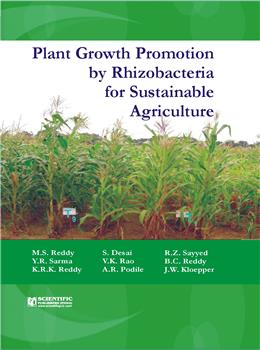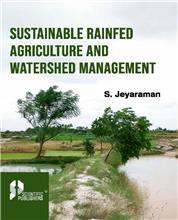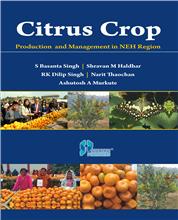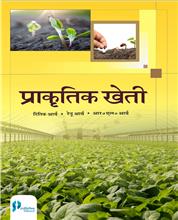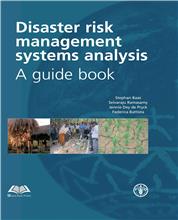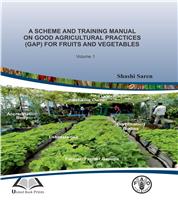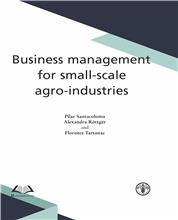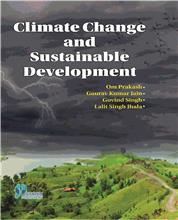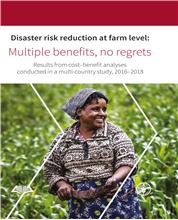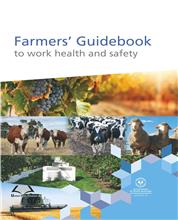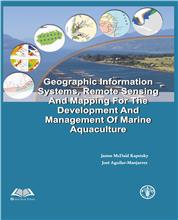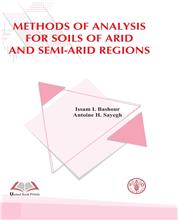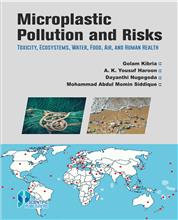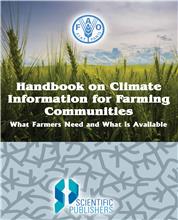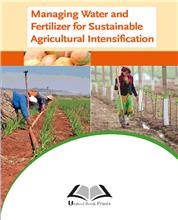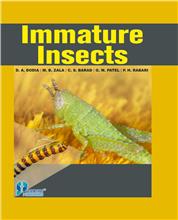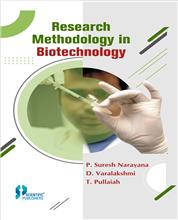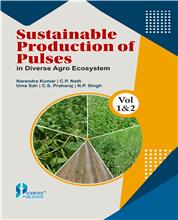Section I - INVITED LECTURES
1 PGPRs in crop production systems - M. S. Reddy, et al
2 Isolation and characterization of PSIRB as biofertilizer and biopesticide in improving the plant health of tomato - S. R. Niranjana, et al
3 Plant growth promoting rhizobacteria (PGPRs) used as bioinoculants for increasing productivity and disease management of MAPs - Mansoor Alam et al
4 Integrated disease management in jute and allied fiber crops with PGPR based bio-inoculants and bio-regulators consortium - Anuradha Bandopadhyay et al
5 Phosphate solubilization mechanisms of Aspergillus tubingensis, a plant growth promoting fungus - M. Sudhakara Reddy, et al
6 Use of bio-fertilizer: A key to sustainable agriculture in India - Kakali Majumdar
7 Biocontrol potential of siderophore producing PGPR - R. Z. Sayyed, et al
8 Application of Bacillus-mediated induced systemic resistance against multiple plant pathogens and its mode of actions - Kyungseok Park, et al
9 Bio-active secondary metabolites from PGPR and botanicals - S. Gopalakrishnan, et al
10 Mechanisms of plant growth promoting rhizobacteria against soil borne pathogens of Coleus and Ashwagandha - S. B. Mallesh and S. Lingaraju
11 Cloning of genes involved in siderophore biosynthesis in Pseudomonas mediterranea G229-21T - Binghai Du, et al
12 Plant growth promotional and biocontrol potential of Fluorescent Pseudomonads from western ghat regions of Karnataka -A. R. Alagawadi, et al
13 Evaluation of Bacillus spp. from rainfed agro-ecosystems for plant growth promotion of Sorghum and Pigeonpea - Mir Hasan Ahmed
14 Diversity of PGPR associated with the saline coastal ecosystems and their beneficial roles in sustainable agriculture - V. R. Prabavathy and Sudha Nair
Section - II. PGPR APPLICATIONS IN CROPS
1 Evaluation of bacilli and Fluorescent Pseudomonads isolated from the rhizosphere and roots of Theobroma cacao L. for biological control of Phytophthora palmivora - Litty Thomas, et al
2 Isolation and functional characterization of potential plant growth promoting Fluorescent Pseudomonads from the cocoa roots and rhizosphere - Litty Thomas, et al
3 In vitro antagonism studies of rhizospheric Fluorescent Pseudomonads of coconut against Ganoderma sp. and Thielaviopsis paradoxa, fungal pathogens of coconut - Chandu Mohan, et al
4 Screening of Fluorescent Pseudomonads from rhizosphere of coconut (Cocos nucifera L.) for plant growth promoting traits - Priya George, et al
5 Effect of bacterization of finger millet grains with the PGPRs isolated from the rhizoplane of Holostemma adakodien Schultes on its germination and 7 day linear growth -S. R. Ambika and Thanuja, L.
6 Actinomycetes diversity in Turmeric (Curcuma longa L.) soils - P. Ponmurugan, et al
7 Response of aerobic rice (Oryza sativa L.) to different isolates of Bacillus megaterium - Shailia Hittilmani, et al
8 Development of PGPR consortium for Catharanthus roseus (L.) G. Don. medicinal plant - B. Karthikeyan and M. Deiveekasundaram
9 A novel strain of Bacillus circulans isolated from apple rhizosphere showing plant growth promoting potential - C. K. Shirkat, et al
10 Effect of bioinoculants on seedling vigour in tobacco (Nicotiana tobaccum) nurseries - D. V. Subhashini, et al
11 Plant growth promoting activity through foliar spray of endophytes on Maize - Gupta Dipmala G. and H.N. Shelat
12 Consortium of antagonistic bacteria improves growth in eggplant (Solanum melongena L.) - R. Ramesh and V.S. Korikanthimath
13 Inhibition of Ralstonia by antagonistic bacteria : mechanisms of antagonism - R. Ramesh et al
14 Growth promoting effect of PGPR in Khejri (Prosopis cineraria) - P. Nallathambi, et al
15 Selection of culturable PGPR from Maize based intercropping system - Anil Kumar, et al
16 Effect of bioagent and fungicidal treatment for enhancement of seed quality parameter of Soybean (Glycine max. L. Merill) - O. D. Kohire, et al
17 Growth response of corn during growing season by plant growth-promoting rhizobacteria - Ahmad Gholami, et al
Section - III. Bio-fertilizers and PGPR in Integrated Nutrient Management
1 Studies on nutrient use efficiency of bioinoculants and biocontrol agent interactions in Casuarina equisetifolia (forest seedlings under tropical nursery condition) - V. Rajesh Kannan and T Muthukumar
2 Influence of bio-fertilizers and sources of nutrients on upland scented Rice - O. M. Yadav et al
3 Effect of integrated nutrient management on yield of Soybean - S. R. More, et al
4 Association of diazotrophic, phosphate and potash solubilizing Roseateles terrai and Burkholderia gladioli with sugarcane and their short-term inoculation effect on wetland rice - R. Muthukumarasamy et al
5 Screening of chickpea root nodule bacterial strains to promote nodulation in Chickpea - V. R. Hinge, et al
6 Growth response and nutrient utilization of Casuarina equisetifolia seedlings inoculated with bioinoculants under tropical nursery conditions - T. Muthukumar and K. Udaiyan
7 Reduction in dose of chemical fertilizers and growth enhancement of sesame (Sesamum indicum L.) with application of rhizospheric competent Pseudomonas aeruginosa LES4 - Sandeep Kumara, et al
8 Metabolic diversity of root nodulating Soybean Rhizobia isolated from Malwa Region of Central India - Mahaveer P. Sharma, et al
9 Effect of biofertilizer on yield and quality of Sunflower (Helianthus annus L.) - J. D. Gaikwad, et al
10 Isolation and assessment of zinc-solubilizing Bacillus isolates from Nimar Region of Central India - Sushil K. Sharma, et al
11 Phytase, phosphatase activity and P-nutrition of Soybean as influenced by inoculation of Bacillus isolates - A. Ramesh, et al
12 Optimization of phosphorus requirement in Soybean-Safflower cropping system on vertisols - C. B. Patil, et al
13 Co-aggregation of microbes for efficient phosphorus solubilization - V. R. Gupta, et al
14 Effect of inorganic fertilizers and PGPR on the growth of Rubber seedlings (Hevea brasiliensis) in nursery - V. K. Syamala, et al
15 Nitrogenase activity and plant growth promoting properties of Asaia bogorensis; an endophyte isolated from mango - N. B. Patil, et al
16 An efficient method for qualitative screening of phosphate-solubilizing bacteria - Apurva Srivastava, et al
Section - IV. MECHANISMS, SIGNALING, PLANT RESPONSES, AND BIOACTIVE METABOLITES
1 Beneficial traits of microbial isolates of organic liquid manures - M. N. Sreenivasa, et al
2 IAA production by the isolates of Psuedomonas spp. from the Eastern Ghats of Tamil Nadu - Nagaraja, Suryadevara, et al
3 Quantitative assay for ACC deaminase producing isolates and their characterization for plant growth promoting potentials - Meenu Saraf, et al
4 Molecular characterization of Bacillus megaterium isolated from different agroclimatic zones of Karnataka - Remya G Pillai, et al
5 Mercuric reductase (merA) gene isolated from plasmid bearing strains of Escherichia coli - Tanveer A. Shah and Arif Ali
6 Molecular markers for population dynamics of cellulose degrading bacteria in Chickpea (Cicer arietinum L.) soils - Machiavelli, et al
7 Molecular characterization and screening of plant growth promoting rhizobacteria under drought stress - V. Sandhya, et al
8 Isolation and molecular characterization of Antibiotic- DAPG (2, 4i acetylphloroglucinol) from Pseudomonas fluorescens - D. Dayal Doss
9 Induction of systemic resistance in tomato (Lycopsersicon esculentum Mill.) by plant growth promoting rhizobacterial mixtures of Bacillus spp. for vascular wilt management - V. Shanmugam and Nandina Kanoujia
10 In silico characterization of heavy metal stress specific phytochelatin synthase(pcs) gene from heterelogous systems - L. Sahoo, et al
11 Biological hardening of micro propagated banana (Musa spp) plantlets with rhizosphere and endophytic bacteria to manage Banana bunchy top virus (BBTV) - M. Kavino, et al
12 Effect of high temperature on Pseudomonas putida NBRI 0987 biofilm formation and expression of stress sigma factor RpoS - Vasvi, et al
13 Evaluation of Fluorescent Pseudomonas spp. with single and multiple PGPR traits for plant growth promotion of Sorghum in combination with fungi - G. Praveen Kumar, et al
14 Proteome analysis of rice responses to beneficial microbe, Pseudomonas fluorescens strain KH-1 - K. Saveetha, et al
Section - V. PLANT PATHOGEN - PGPR INTERACTIONS
1 Eco-friendly approaches in the management of bacterial blight caused by Xanthomonas oryzae pv. oryzae of rice in Karnataka - P. Nagaraju, et al
2 Suppression of bacterial blight of Anthurium (Anthurium andreanum) by a Fluorescent Pseudomonad - S. Dhanya, et al
3 Biological suppression of charcoal stalk rot of maize by trichoderma and phosphate solubilizing Pseudomonads - S. I. Harlapur and M. C. Wali
4 Psuedomonas fluorescens and Trichoderma spp as biocontrol agents for the management of soilborne fungal pathogens - Bharati N Bhat
5 Role of endophytic bacteria in plant growth promotion and induction of systemic resistance - R. Rangeshwaran, et al
6 Plant growth promoting rhizobacteria mediated resistance against Alternaria helianthi in sunflower - H. S. Prakash and A. C. Udaya Shankar
7 Evaluation of rhizosphere actinomycetes for Anti-Rhizoctonia activity -G. Narchtnai, et al
8 PGPR mediated systemic resistance against tobacco mosaic virus in Tomato - K. S. Jagadeesh, et al
9 Antagonistic effect of Trichoderma spp. against Phytophthora - the foot rot pathogen of black pepper (Piper nigrum L.) - R. Athul Sandheep and M. S. Jisha
10 Biocontrol potential of salinity tolerant Pseudomonas aeruginosa against Macrophomina phaseolina under saline stress conditions - Naveen K. Arora, et al
11 Investigations on antifungal metabolites of Pseudomonas fluorescens isolates and their antagonism against major fungal pathogens of rice - B. Prasanna Kumar Reddy, et al
12 Biological control of Rice sheath blight disease by Pseudomonas fluorescens isolates - B. Prasanna Kumar Reddy, et al
13 In-vitro antagonistic effect of Pseudomonas fluorescens on mycelial growth of rice blast and sheath blight pathogens - B. Prasanna Kumar Reddy, et al
14 Two species consortia, Sinorhizobium meliloti and Azotobacter chroococcum control Macrophomina phaseolina causing root rot and enhance growth and yield of Cajanus cajan L. - D. K. Maheshwari et al
15 Exploitation of PGPR and fungal strains for the management of leaf blight disease in Noni - Manjunath Hubballi, et al
16 Inhibition of Ralstonia solanacearum by antagonistic bacteria: mechanisms of antagonism - R. Ramesh, et al
17 Scope of PGPR in seed health management - P. Nallathambi, et al
18 Plant growth promoting endophytic bacterium mediated resistance against brown spot disease of Paddy - Chandra Nayaka, et al
19 Assessment of PGPR components in the management of Frog Eye leaf spot of bidi tobacco in India - Shamarao Jahagirdar, et al
20 Antifungal activity of PGPR against soil borne pathogen in Cotton - V. V. Deshmukh, et al
21 Integrated management of foot rot of black pepper - Hemant G. Hegde and Gurudatt M. Hegde
22 Potencial of Trichoderma strains in alterning the pH environment of substrate - R. G. Chaudhary and Neetu shukla
23 Plant growth promoting rhizobacteria for the management of root-knot/wilt complex of Coleus and Ashwagandha - S. B. Mallesh and S. Lingaraju
24 Compatibility of antagonistic growth promoting rhizobacteria with agrochemicals used in Hevea brasiliensis cultivation - Kochuthresiamma Joseph, et al
25 Antagonistic activity of endophytic bacteria against major leaf pathogens of Hevea brasiliensis - Shaji Philip, et al
26 Biological control of Fusarium oxysporum sp. Vanillae, the casual agent of stem rot of Vanilla in vitro - Gangadhara Naik, et al
27 Efficacy of different biological agents in the management of pigeonpea cyst nematode (Heterodera cajani) in black gram -V. Devappa, et al
28 Management of root-knot and wilt complex in Coleus forskohlii caused by Meloidogyne incognita and Fusarium chlamydosporum - Kumar, .B., et al
29 Integrated management of root-knot nematode with organic amendments and bioagents in FCV tobacco - H. Ravindra. et al
30 Screening of rhizobacteria for antagonism against Rhizoctonia solani and growth promotion activity - M. Solanki et al
31 Biological control of charcoal rot of sorghum by using arbuscular mycorrhizal fungi - B. N. Reddy, et al
32 Bacillus subtilis RP24: A potent biocontrol agent for Fusarium udum causing Pigeonpea Wilt - Minakshi Grover, et al
33 Study on the efficiency of PGPR on Zea mays L in promoting the plant growth and control on the seedling blight disease caused by Fusarium sp. - K. Ejilane. et al
34 Biological control of FCV tobacco damping-off using talc based formulations of antagonists - C. Karegowda, et al
35 Bio-management of root-knot nematode, Meloidogyne incognita in Jasmine (Jasminum sambac L.) - N. Seenivasan, et al
36 Management of major diseases/pests of wheat through induced systemic resistance (ISR) using PGPR and like organisms - A. K. Sharma, et al
37 Characterization of some plant growth promoting rhizobacteria in relation to biotic stress management with enhanced growth and production of jute and allied fibre crops - Anuradha Bandopadhyay, et al
38 Beneficial traits of PGPR mediated disease management and growth promotion in jute and sunnhemp with bioformulation of activated and wild biocontrol agents - A. Bandopadhyay, et al
39 Biological control and plant-growth promotion by Bacillus strains from milk - Noor Khan, et al
40 Biological control of Pigeon pea wilt By Pseudomonas Fluorescens and Trichoderma viridae - S. Satyavani, et al
41 Biological control of crown rot and stem rot diseases of Groundnut by Pseudomonas aeruginosa - V. Udayini, et al
42 Biocontrol potential of plant growth promoting rhizobacteria and fungi on sunflower collar rot (Sclerotium rolfsii) incidence - T. Navaneetha, et al
43 Antagonistic potential and molecular characterization of Trichoderma harzianum isolates against Sclerotium rolfsii infecting tobacco - K. Siva Raju, et al
44 In-vitro efficacy of various rhizobacterial isolates against Rhizoctonia solani, the causal agent of rice sheath blight disease - K. Vijay Krishna Kumar, et al
45 Cellulolytic bacteria perspectivte for using In protect of agricultural cultures from phytopathogenic fungi - I. E. Smirnova and M. G. Saybenova
Section - VI. BIOGRAPHY, GENOMICS, BIOINFORMATICS
1 Isolation and characterization of plant growth-promoting rhizobacteria from Western Ghat forest soil, India - Ashok Pandey et al
2 Characterization of indigenous PGPR strains isolated from the soils of Himachal Pradesh - S. S. Kanwar, et al
3 Role of endophytes in inducing systemic resistance against leaf blight disease of amaranth - Sai Sree Uppala, et al
4 Bioefficacy of endophytes in the management of leaf blight disease of amaranth - Sai Sree Uppala, et al
5 Amaranth endophytes and their role in plant growth promotion - Sai Sree Uppala et al
6 Bioinformatic studies on the diversity of Rhizobium, a growth promoting rhizobacteria (PGPR) - G. Ganeshkumar and R. Chandrasekaran
7 Plant growth promotional activities of PCP degrading bacteria - K. S. Jagadeesh, et al
8 Rhizobium undicola, a novel endophyte of rice cultivated in India and its role in plant growth promotion - R. K. Singh, et al
9 Sensitivity of PGPR to agrochemcials - R. W. Ingle, et al
10 Effect of agrochemicals on microflora in rhizosphere soil of soybean - M .G. Patil, et al
11 Isolation & characterization of plant growth promoting rhizobacteria (PGPR) from Groundnut and Cotton rhizospheres of Saurasharta region -R. J. Raiyani et al
12 Isolation of chitinolytic bacteria from different agroclimatic regions of India and characterization of their PGPR activity, potential in antifungal Biocontrol - D. Praveen Kumar, et al
13 Accessing actinomycetes from herbal vermicomposts and their evaluation for PGP traits - B. Keerthi Kiran. et al
14 Isolation and characterization of chitinolytic rhizobacteria for the management of Fusarium wilt in Tomato -P. Hariprasad and Niranjana, S. R.
Section - VII. COMMERCIALIZATION, REGULATORY ISSUES, TRADE BARRIERS IN PGPR, HUMAN RESOURCE DEVELOPMENT AND TRANSFER OF TECHNOLOGY
1 Efficacy of talc based formulation of Pseudomonas fluorescens for the management of foliar blight of wheat and sheath blight of rice - Rama S. Singh, et al
2 Understanding environment management practices - Upendra K. Jani
3 Development of bacterial consortium to alleviate high temperature stress in sorghum seedlings - Sk. Z. Ali, et al
4 Evaluation of vermicasts of Eudrilus eugeniae (Kinb.) as carrier material for biofertilizers - M. Jeyakumar et al
5 Optimization of culture medium supplemented with vermicompost extract for mass multiplication of Azosprillum braziliense (MTCC 4036) - K. Raja Sekar and N. Karmegam
6 Plant growth promoting microbial consortial formulations (talc/liquid) mediated biological control of sunflower necrosis virus disease under natural field conditions - K. Srinivasan and N. Mathivanan
7 Growth, shelf life and bioefficacy of liquid inoculants (PSB, Azospirillum spp and Azobactar spp) formulated with polymeric additives
- Leo Daniel Amalraj, E. et al
8 Field efficacy of commercial formulations of Pseudomonas fluorescens and plant extracts against rice sheath blight disease - K. V. K Kumar et al
9 Evaluation of Commercially Available PGPR for Control of Rice Sheath Blight Caused by Rhizoctonia solani - K. V. K Kumar et al
